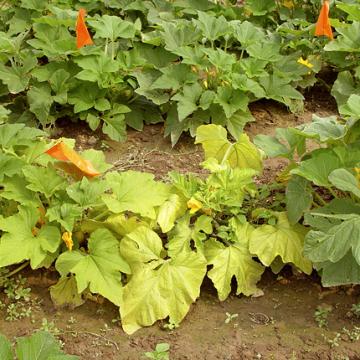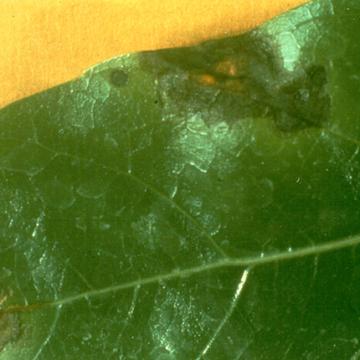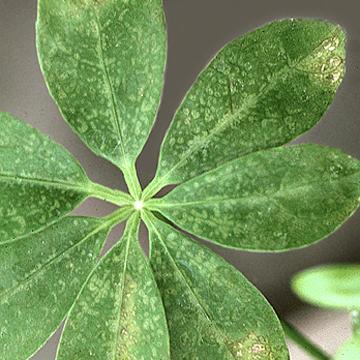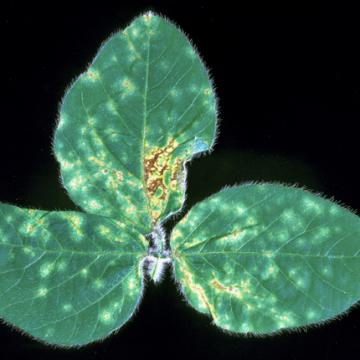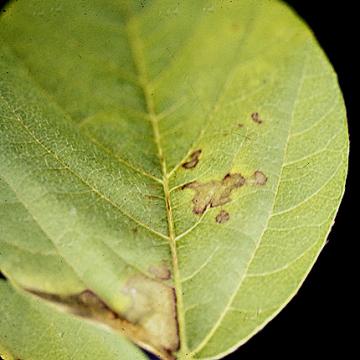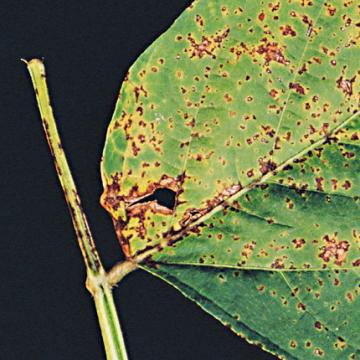DISEASE: Aster yellows
HOST: Squash
Diagnostic characteristics for the disease are yellowing of young leaves, proliferation of secondary shoots, and rigid erect habit. Leaves are misshapen and smaller than normal and have stiff, thick laminae.
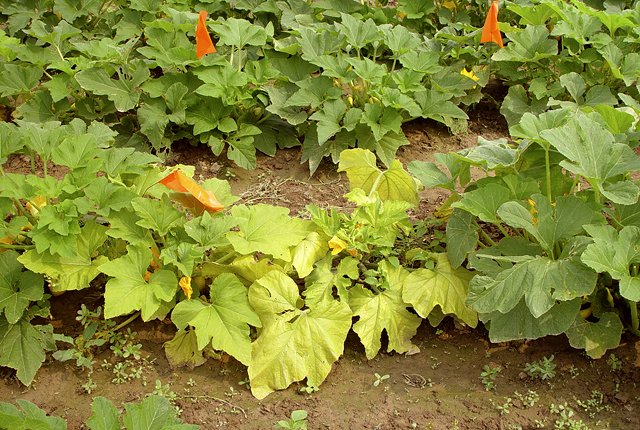
Aster yellows | Squash
DISEASE: Aster yellows
HOST: Squash (Cucurbita sp.)
PATHOGEN: 'Candidatus Phytoplasma asteris'
PATHOGEN SYNONYM: Phytoplasma Aster yellows group
SOURCE: S. Miller
DISEASE: Bacterial blight
HOST: Soybean
Leaves with yellowish brown necrotic lesions. Lesions also may be yellow to light brown and bordered by yellowish green halos. Lesions occur on stems, petioles, and pods.
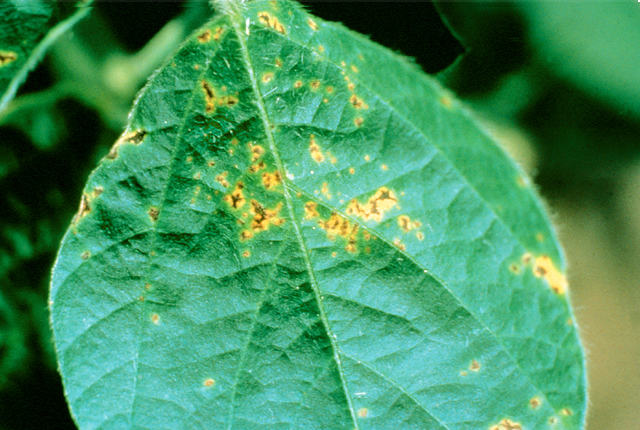
Bacterial blight | Soybean
DISEASE: Bacterial blight
HOST: Soybean (Glycine max)
PATHOGEN: Pseudomonas syringae pv. glycinea
SOURCE: J. B. Sinclair
DISEASE: Bacterial leaf spot
HOST: Schefflera
Leaf with water-soaked lesions.
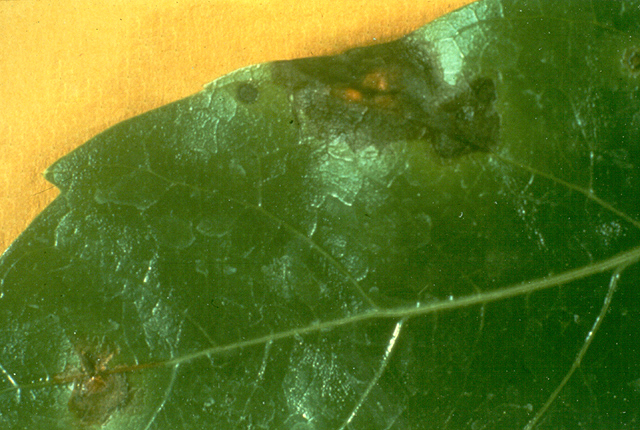
Bacterial leaf spot | Schefflera
DISEASE: Bacterial leaf spot
HOST: Schefflera (Schefflera actinophylla)
PATHOGEN: Xanthomonas hortorum pv. hederae
PATHOGEN SYNONYM: Xanthomonas campestris pv. hederae
SOURCE: M. Gleason
DISEASE: Bacterial leaf spot
HOST: Schefflera
Leaf with large, grayish necrotic areas.

Bacterial leaf spot | Schefflera
DISEASE: Bacterial leaf spot
HOST: Schefflera (Schefflera actinophylla)
PATHOGEN: Xanthomonas hortorum pv. hederae
PATHOGEN SYNONYM: Xanthomonas campestris pv. hederae
SOURCE: A. Chase
DISEASE: Bacterial leaf spot
HOST: Schefflera
Leaf with many small, pinpoint-sized lesions and a few large lesions.
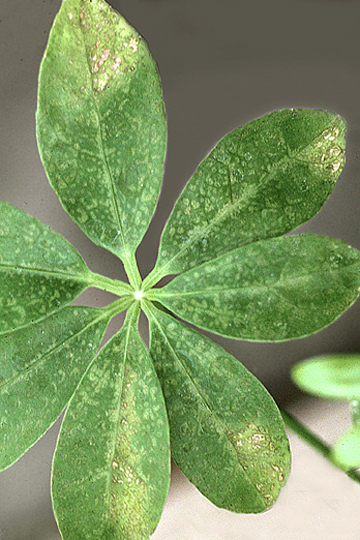
Bacterial leaf spot | Schefflera
DISEASE: Bacterial leaf spot
HOST: Schefflera (Schefflera arboricola)
PATHOGEN: Xanthomonas hortorum pv. hederae
PATHOGEN SYNONYM: Xanthomonas campestris pv. hederae
SOURCE: A. Chase
DISEASE: Bacterial leaf spot
HOST: Soybean
Early symptoms of bacterial blight.
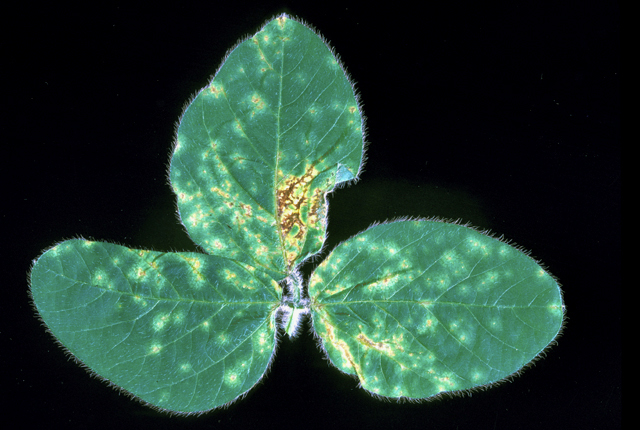
Bacterial leaf spot | Soybean
DISEASE: Bacterial leaf spot
HOST: Soybean (Glycine max)
PATHOGEN: Pseudomonas syringae pv. glycinea
SOURCE: D. Cupples
DISEASE: Bacterial leaf spot
HOST: Soybean
Leaf with large, light brown necrotic lesions.
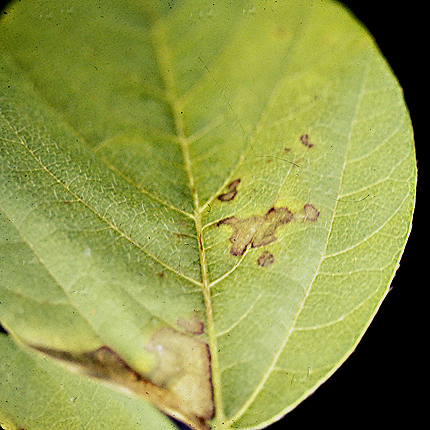
Bacterial leaf spot | Soybean
DISEASE: Bacterial leaf spot
HOST: Soybean (Glycine max)
PATHOGEN: Pseudomonas viridiflava
SOURCE: R. Gitaitis
DISEASE: Bacterial pustule
HOST: Soybean
Early symptoms are minute, pale green spots on young leaves. Later, small pustules form in the center of spots, best observed on underside of leaves. Spots vary in size and darken with age and lesions coalesce. Dead areas are torn away by wind.
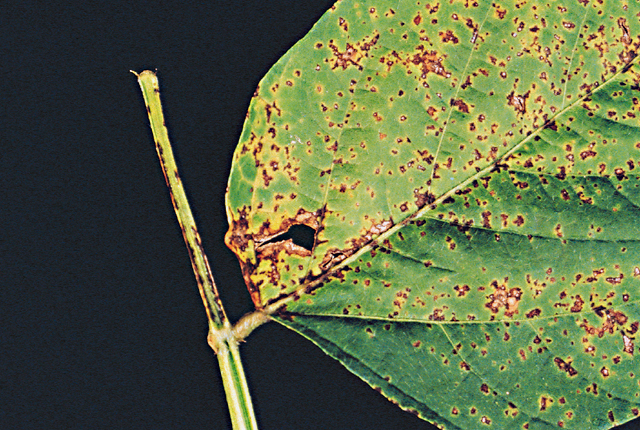
Bacterial pustule | Soybean
DISEASE: Bacterial pustule
HOST: Soybean (Glycine max)
PATHOGEN: Xanthomonas axonopodis pv. glycines
PATHOGEN SYNONYM: Xanthomonas campestris pv. glycines
SOURCE: APS
DISEASE: Bacterial wilt
HOST: Squash
Field with severe symptoms of wilt. Foliage often is chlorotic and leaf margins may be chlorotic and necrotic before plant death. Bacterial ooze may be seen streaming from the xylem when infected stems are cut.
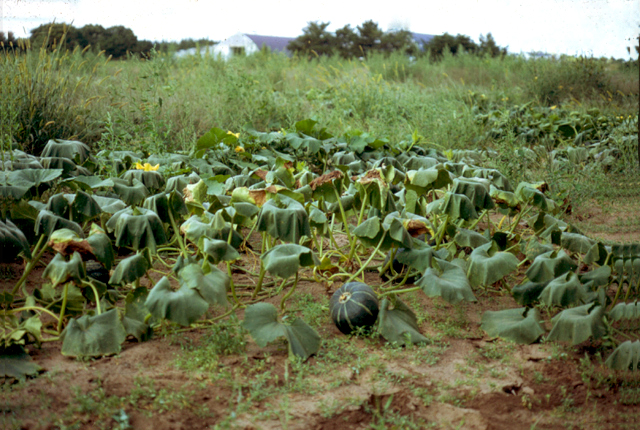
Bacterial wilt | Squash
DISEASE: Bacterial wilt
HOST: Squash (Cucurbita maxima)
PATHOGEN: Erwinia tracheiphila
SOURCE: B. Jacobsen, M. Shurtleff


